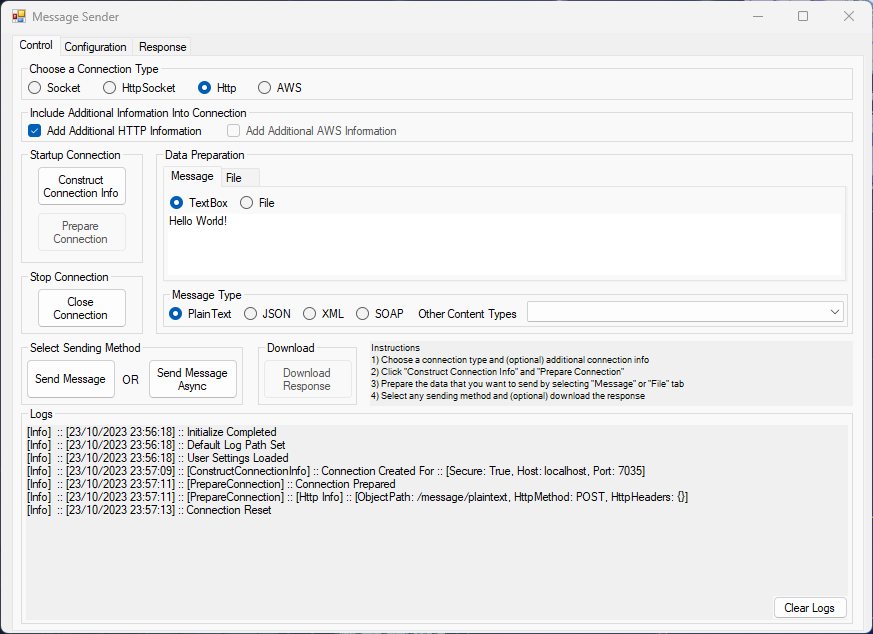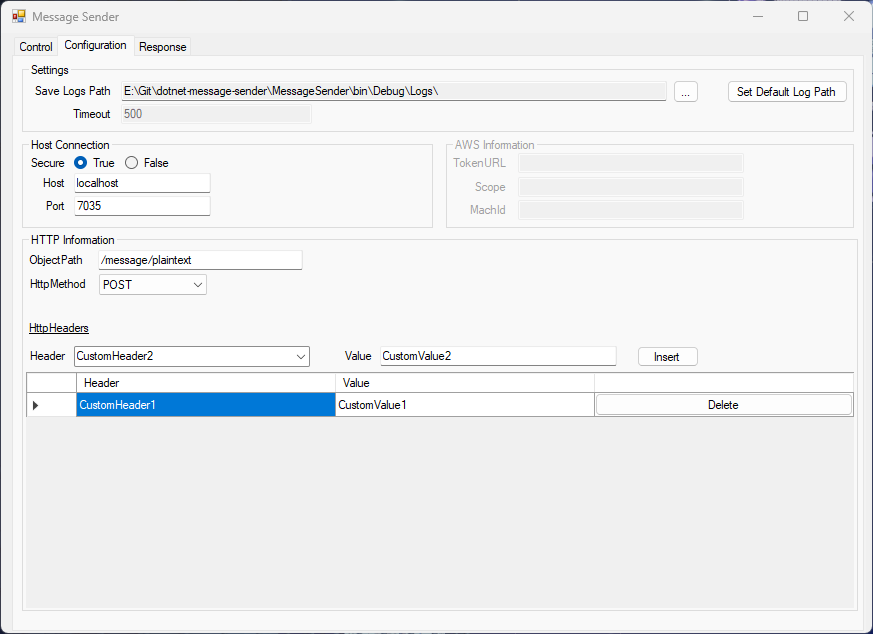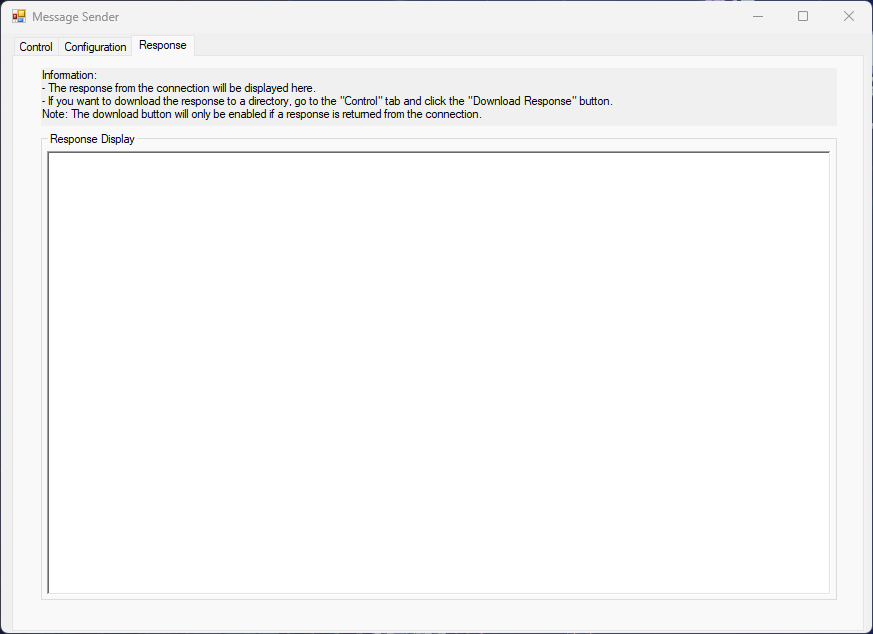MessageSender is a C# Windows Form application. It is a simple application that acts as the client and sends requests to different connection types/communication protocols and displays the response.
The entire repository is a Visual Studio project solution. There are 8 projects in it.
The solution file can be found in MessageSender folder.
The projects can be categorised in two groups. One is the MessageSender application, and the other is the different connection types/communication protocols.
The structure is displayed below:
- Solution
- CommunicationProtocols
- HttpSocket
HttpSocketFile(Project)HttpSocketMessage(Project)
- Socket
SocketAsyncFile(Project)SocketAsyncMessage(Project)SocketSyncFile(Project)SocketSyncMessage(Project)
HttpRestApi(Project)
- HttpSocket
MessageSender(Main Project) (Solution file found here)
- CommunicationProtocols
This tab is where you can control the
- Connection type you want (Socket, HttpSocket, HTTP or AWS)
- Additional information for your request (e.g. Custom Http Headers or AWS token)
- Preparing the connection
- Preparing which data to send (Message or File; the Content Types)
- The sending method (sending message synchronously or asynchronously)
- Download response as text files to a directory of your choice
Below shows an image of the Control tab:
Below shows an image of the Configuration tab: This tab is where you can configure the
- Directory of where the logs will be saved at
- Host connection which is the identifier of where you want the request to do (Note: Secure True is HTTPS , and Secure False is HTTP)
- AWS information (Note: This is not tested properly)
- HTTP information which customises the endpoint, method and headers
Note: To customise HTTP or AWS request, you need to make sure to ✓ the appropriate checkbox in the Control tab under the Include Addition Information Into Connection section
This tab is just reponsible for displaying the body of the response received.
Below shows an image of the Response tab:
For the different data preparation types (Message and File), it converts the text/files into a byte stream, appends them into the request body and uses the HttpWebRequest class to send the request and receive the response.
In the CommunicationProtocols folder, there are some examples that you can follow to get a head start.
While I think this simple application is mostly functional. I still think that many things can be improved and there are probably bugs lying around somewhere.


